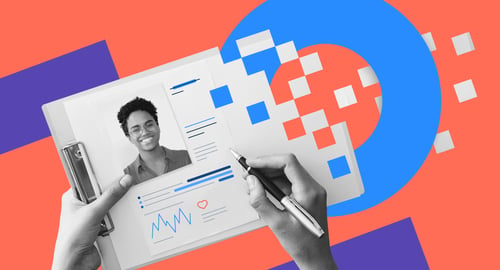In the early 20th century, the Ford Motor Company introduced groundbreaking benefits to its employees, such as healthcare and pensions, which were revolutionary at the time.
Workplaces have since undergone a substantial transformation, rendering the employee perks provided during that era as merely basic necessities by today's standards.
With the increasing amount of personal data that is being stored, employees need to be confident that their data is safe, making employee data protection part of this list of basic benefits.
As the name suggests, employee data protection is the process of safeguarding employees’ personal data from unauthorized access.
Data protection is crucial
While it’s a legal requirement in most countries to safeguard employee data, ranging from performance evaluations to health information, empowering employees to exercise their right to privacy helps organizations inadvertently build trust.
Going beyond implementing the bare minimum of employee data protection as per regulatory requirements positively impacts how potential employees and customers view a company.
Having well-formed employee data protection processes is also a competitive differentiator that attracts high-quality talent. It builds a positive corporate culture and ensures the smooth functioning of human resources (HR) processes.
Setting the right measures to protect employee data prevents identity theft and fraud as well as internal data breaches. Building trust with employees by demonstrating care for their well-being ultimately translates into greater customer success.
Tips for companies to protect their employee data
The following are some ways organizations can approach and excel at employee data protection.
Set up access controls to limit access to employee data. Implementing role-based access controls can ensure that only authorized employees can view sensitive employee data. Setting up multi-factor authentication is also an effective way to protect sensitive information.
Minimize the collection of personal data. Collect only the data that are essential for business operations. The lesser the amount of data, the easier it is to protect.
Encrypt data both at rest and in transit. This prevents unauthorized access to data even if it falls into the wrong hands. Utilize encryption software for this purpose.
Perform regular security audits. This can help identify vulnerabilities in the data security systems and empower cybersecurity professionals to address them promptly.
Establish clear data retention policies. Make sure the data collected is retained for as long as necessary. The data that are no longer needed should be disposed of securely.
Keep the software stack and IT infrastructure up to date. Doing so can help fight known vulnerabilities. Patch management software is useful for this use case.
Adopt the privacy-by-design approach. Integrating privacy considerations into the design of systems and processes and not treating privacy as an afterthought can significantly reduce the occurrence of data breaches.
Establish a robust incident response plan. This will make it easier to address potential data breaches and make the process of containment, investigation, communication, and recovery more streamlined.
What does G2 data say?
Along with having the right set of tools to protect employee data, proper security awareness training is essential to empower employees to protect themselves and the company's assets.
However, the author is of the opinion that familiarity breeds carelessness. This is one of the reasons why security awareness training software should be treated only as the first line of defense.
As per the above graph, companies will have to wait for a longer duration to expect a return on investment while implementing security awareness training tools when compared to other security tools like mobile data security solutions.
In other words, in terms of a minimum viable security stack, security awareness training tools can be placed as less critically important with respect to other security tools. More about this will be discussed in G2’s upcoming blog post on the State of Security.
However, security awareness training reinforces good behavior and is integral to the success of data privacy programs.
What future hold for employees and data security
Some employers are known to provide employee identity theft protection software to their employees as part of their corporate benefits package. This type of security software proactively monitors employees’ personal information on the dark web.
Sooner than one would expect, organizations will employ digital twin technology to test employee performance and optimize it. This virtual simulation of employees will open a new can of worms for cybersecurity specialists as almost every action of employees will be tracked and stored.
Learn how employee identity theft protection software helps combat cyber threats.
Edited by Sinchana Mistry


 by Amal Joby
by Amal Joby
 by Amal Joby
by Amal Joby
 by Amal Joby
by Amal Joby